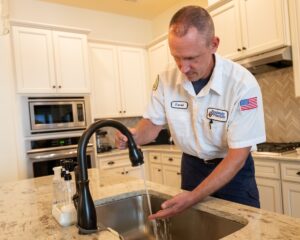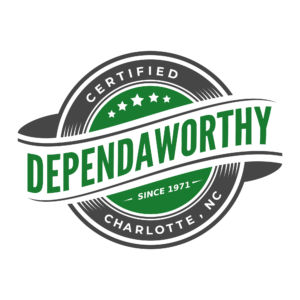 What’s The Best Way to Unclog a Sink Drain?
What’s The Best Way to Unclog a Sink Drain?
Have you ever dealt with a clogged sink? Whether in your bathroom or kitchen, a blocked drain can really mess up your day. And if you ignore it, these blockages can cause even more inconvenience and damage.
In bathrooms, clogged drains are usually caused by a mix of hair, dirt, and skin flakes getting tangled up with soap scum. In kitchens, you might be dealing with food bits or grease. Regardless of the situation, they can lead to slow drains or complete blockages. Fortunately, nowadays, you can count on several methods to unclog a sink drain and restore proper drainage. Let’s dig in.
What Are the Main Causes of Sink Drain Clogs?
Before we start, we need to figure out what’s causing that clog. Is it just some soap buildup, or is something bigger stuck there?
Finding the root of the problem helps you pick the best way to tackle it, as different methods work for different types of clogs. For example, vinegar and baking soda are great against soap scum, while a plunger or drain snake is better suited for larger obstructions.
Here are the most common culprits:
Soap Scum
Soap scum forms when soap binds with minerals in the water, creating a sticky residue that clings to pipes and traps debris.
Hair
Hair is a primary contributor to bathroom sink clogs. It binds with soap scum and other materials, creating dense blockages.
Hygiene & Grooming Products
Products like toothpaste, shaving cream, and lotions can accumulate in pipes, adding to clogs.
Damaged Pipes or P-Trap
Cracked or misaligned pipes and a malfunctioning P-trap can lead to frequent clogs.
Main Line Clog
If you see yourself with a clog in the main sewer line, this can be an issue, as it can cause multiple drains to back up.
Oil or Grease
Although more common in kitchen sinks, oil and grease can also find their way into bathroom drains, solidifying and causing clogs.
Eight Effective Ways to Unclog a Sink Drain
1. Enzyme Cleaners
Enzyme cleaners, or also known as enzymatic drain cleaners, use natural enzymes to crumble the gunk in your pipes. They’re gentler than those harsh chemical cleaners, which is good for your pipes and the environment.
These cleaners work by digesting the organic material, causing the clog, which is then flushed away with water.
2. The Old Baking Soda & Vinegar Trick
This method is simple and effective for minor clogs caused by soap scum and organic matter. And it’s like a science experiment in your sink!
Pour approximately a cup of baking soda down the drain, followed by vinegar (the same amount). Let the mixture fizz and work for about 15-30 minutes, then flush with hot water.
3. Unclogging with a Plunger Power
Yep, plungers aren’t just for toilets! A sink-specific plunger can be very effective in unclogging a sink drain. Just make sure there’s enough water in the sink to cover the plunger’s cup.
Place the plunger over the drain and pump vigorously several times. The pressure created can break up the clog, allowing it to be washed away.
4. Boiling Water
Boiling water can melt away soap scum and other minor blockages.
Boil the water and carefully pour it directly into the drain. Try to repeat this process in two to three stages, allowing it to work for a few seconds between pours. This method is better for clogs created by grease or soap.
5. Snaking it Out
A drain snake, or plumber’s auger, is a flexible tool to help you reach deep into the drain to dislodge clogs. It’s a bit trickier to use, but it can be really effective.
Place the auger into the drain and turn the handle to break up the blockage. Once the resistance lessens, slowly pull the snake out and dispose of any debris.
6. Wet/Dry Vacuum
A wet/dry vacuum can be another helpful way to unclog a sink drain. In the vacuum, choose the liquid setting, form a tight seal over the drain, and turn it on. The vacuum can either suck out the clog or blow it through the pipe, depending on the setting.
7. Cleaning the P-Trap
The P-trap is the curved part of the pipe under the sink that traps debris. This action prevents it from clogging the main drain line. You might need to take it apart and clean it out.
Place a bucket under the P-trap to hold any water or debris. Unscrew the P-trap and remove any blockages manually. Rinse it thoroughly before reassembling it.
8. Calling a Local Plumber
If DIY methods fail, it’s best to call the pros. Dependaworthy Benjamin Franklin Plumbing offers reliable and trustworthy services. Our professionals can handle severe clogs and get your plumbing in top condition.
Unclog a Sink Drain With Dependaworthy Services
There are several effective DIY methods to unclog a sink drain, from enzymatic cleaners to drain snakes. Regular drain maintenance can prevent many common issues, but if you encounter a persistent or severe clog, consulting an expert like Dependaworthy Benjamin Franklin Plumbing is wise.
Our team has served the Charlotte homeowners for their drain unclogging needs for years. We guarantee to fix it right, or you don’t pay.
